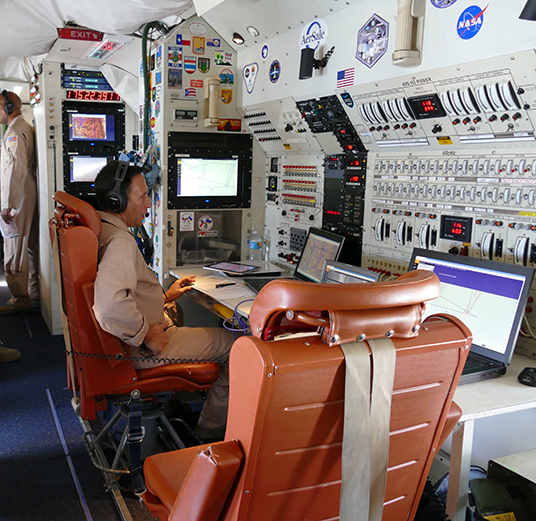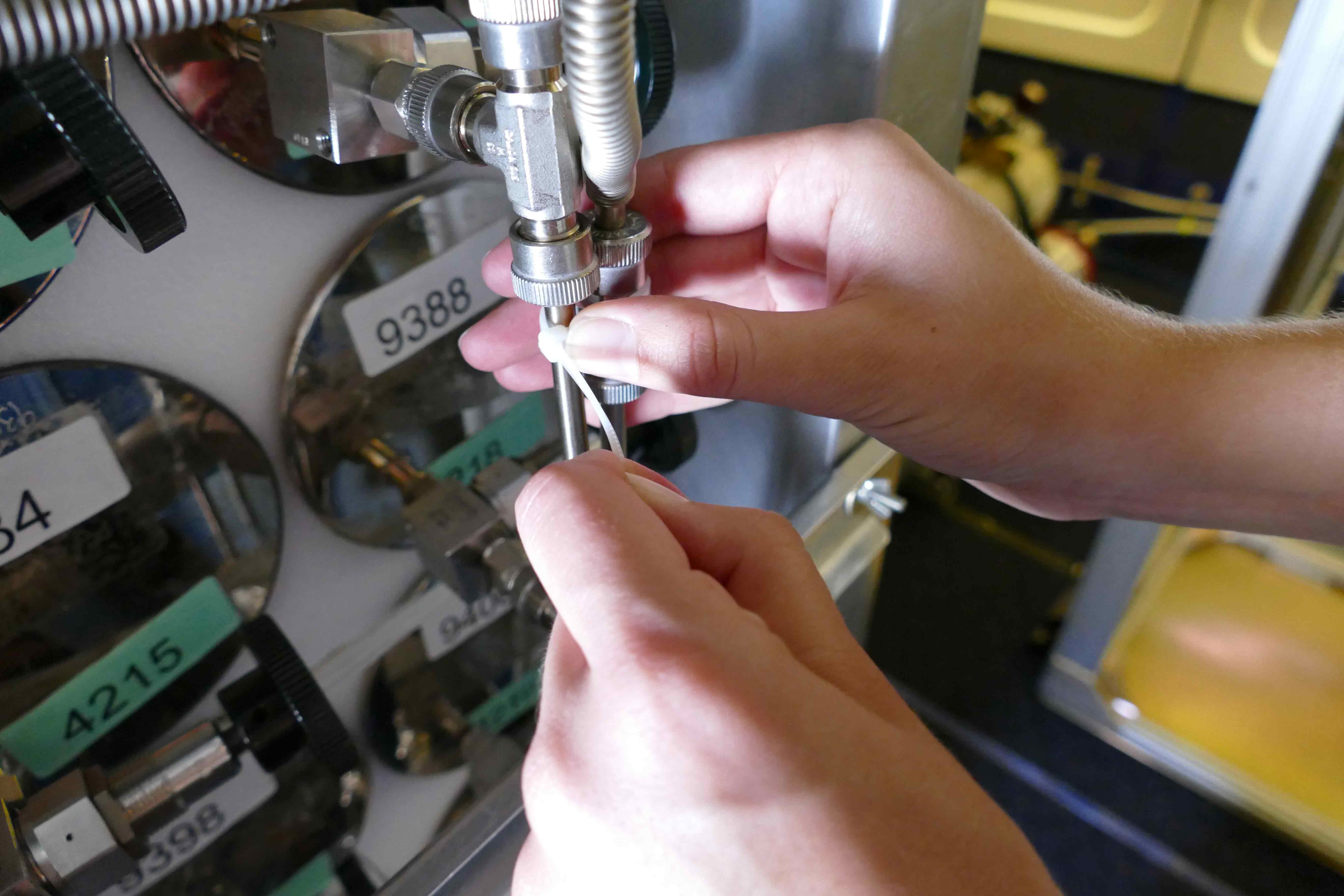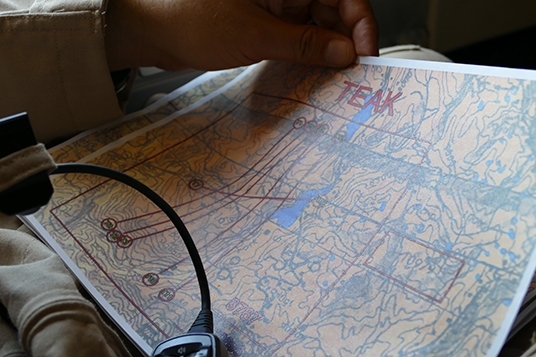Ask NASA Climate | June 25, 2015, 15:45 PDT
This plane is so tricked out!

The marvelous winged beast: NASA’s modified DC-8, with modified windows and intake valves. View larger image.
To get ready for flying on this airborne mission, the Student Airborne Research Program (SARP), I read up on the aircraft, a “modified DC-8.” The info seemed straightforward enough. I viewed some animations of the plane’s configuration, and filled out a bunch of paperwork, but nothing could have prepared me for the moment I first stepped foot on that plane.
A “modified DC-8,” you call it? Hah! The term “modified” doesn’t even come close to describing this marvelous winged beast, every inch of which has been fully customized to work as a flying science laboratory. Wanna hear about it? I’ll bet you do.Of course there were more large computer systems, collection canisters, science instruments, navigation and coordination consoles and other equipment than I could ever have imagined, but it was the smaller details that really struck me. For example, many of the typical cloudy, yellow commercial aircraft windows had been replaced by panels with tubes and valves for collecting air samples at altitude. They stuck out of the holes where the old windows had been. There are also holes on the bottom of the plane for the radar instruments. I sat near a type of optical window, which was maximized for clear viewing and bolted into the fuselage.
Another thing I thought was cool was that literally three minutes into the flight, one of the mission managers announced, “OK, time to get up out of your seats, get moving and go to work.” As someone who hates sitting still, I was like, “This is fantastic!” Within moments the plane was crawling with scientists taking measurements of carbon monoxide, ozone and carbon dioxide and filling racks of canisters with air samples to take back to their lab on the ground. (Learn more about the SARP science here.) Flight project coordinators were busy communicating with science project coordinators and the pilots over the headsets to make sure the science objectives were achieved. I took a turn in the cockpit for a while to spend time with two pilots and a flight engineer. The science required us to fly as low as 1,000 feet over the Sierra Nevadas along multiple prearranged flight paths. Remaining at a constant altitude while flying over mountains with extremely variable terrain meant these pilots had to tuck in and really fly the plane (as in “Pay attention, y’all! There ain’t no autopilot- or cruise control-kind of flying.”)Learn more about NASA’s airborne science here.
Learn more about NASA’s aircraft here.
Track NASA aircraft in real-time here. (Click on “satellite” in the dropdown on the right.)
Coming up on this blog, learn about the science that was performed on this flight as I follow up on the air samples that were collected.




